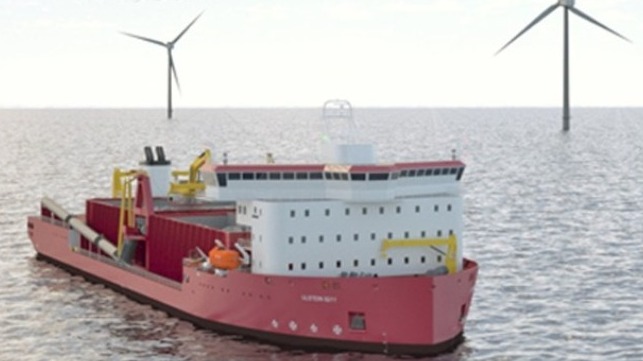Designs for Jones Act Compliant Vessel to Support Offshore Wind

Looking to realize the opportunities in the emerging U.S. offshore wind industry, Great Lakes Dredge & Dock Corporation (GLDD) is proceeding with the design and development of the first U.S.-flagged Jones Act compliant, inclined fallpipe vessel for subsea rock installation. The vessel would be an important component to support the U.S. industry, which according to the Jones Act would require a U.S. built, owned, and operated vessel to ship goods between U.S. ports and operate in U.S. coastal waters.
“We are initiating this project because we firmly believe that a Jones Act compliant offshore wind subsea rock installation vessel is a critical foundational piece required to advance the U.S. offshore wind energy industry,” said Lasse Petterson, GLDD’s chief executive officer and president. “U.S. offshore wind’s potential growth could be a true economic stimulus for America. We believe this is the optimal time for us to leverage our extensive specialized vessel expertise to enter this exciting market now coming to the United States.”
Pending business conditions and a final investment decision, GLDD plans to build and operate the vessel with American workers. The vessel they believe will help spur additional job growth and correspond with the establishment of a U.S.-based rock supply chain network for subsea rock installation, with quarries in states along the East Coast. The vessel would likely be built on the Gulf Coast and initially operate on the East Coast. GLDD said it would also be available as offshore wind projects develop along the Gulf and West Coasts.
GLDD has engaged the engineering firm Ulstein Design and Solutions B.V. for the vessel’s conceptual and regulatory design engineering. GLDD plans to design the vessel to state-of-the-art specifications and build the vessel with the highest maritime standards, including air-quality controls to adhere to EPA Tier 4 emissions standards.
Pending federal permitting and regulatory approvals, as well as a final investment decision, the plan anticipates the vessel will be operational as early as Q1 2024, to coincide with major offshore wind project construction timelines.
